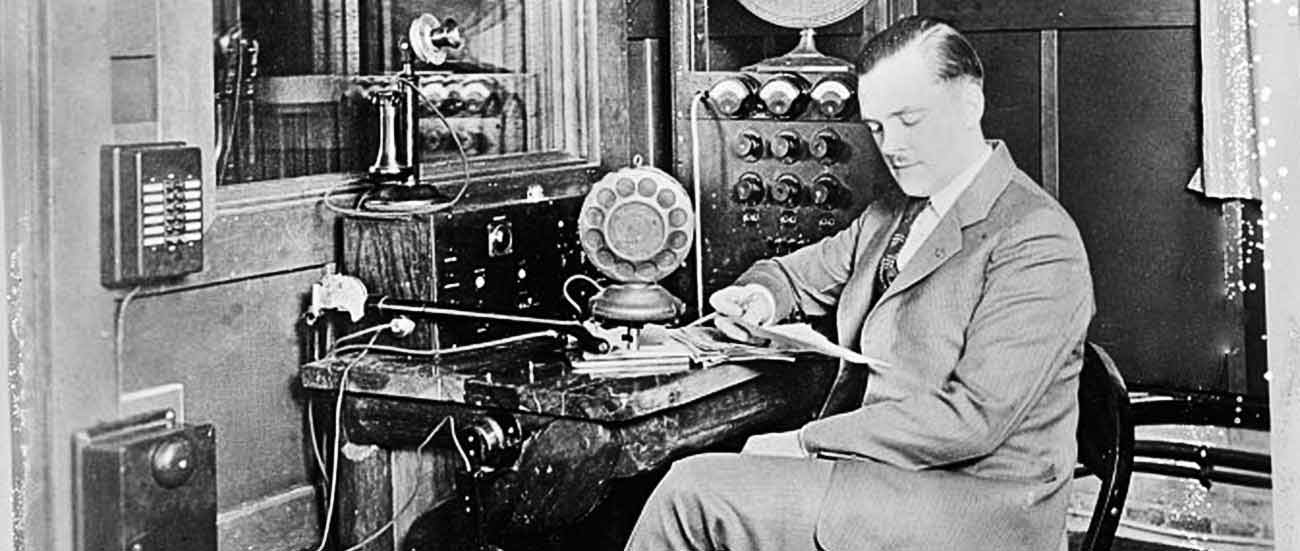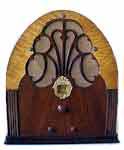The 1920's was a prolific period for new inventions and improvements to existing technology, that had a major impact on the way people lived.

1920's Science and Technology

Many of the household items that we take for granted today were either invented or developed into viable commercial products in the 1920's. Labor saving, entertainment and comfort enhancing items like electric irons, toasters, refrigerators, air-conditioners, radio, television and vacuum cleaners, were just a few.
It is hard for us to imagine today the excitement generated when technological marvels of modern science like radio and television were first demonstrated to the general public. These were new and exciting times. Whole new industries and employment opportunities opened up to manufacture goods for the rapidly expanding retail market fueled by easy consumer credit in the form of instalment payment plans.
In 1926 the National Patent Office abandoned its requirement for inventors to supply models of their inventions in order to obtain a patent. Over many years they had accumulated more than 200,000 models which required a lot of storage space. The decision was made to to donate the most famous models to museums and auction the rest. Dealers from New York and Baltimore bought up the majority of the models with pushcart merchants being the chief purchasers. They then tried selling them on the streets to the public for anywhere between 25 cents and 25 dollars each.
In 1927 President Coolidge signed into existence the new Radio Control Bill, as the radio had run wild, with new broadcasting stations springing up like mushrooms and filling the ether with so many conflicting and overlapping vibrations that the result to the listener was chaos. The new radio bill regulated the airwaves with the formation of a Radio Commission. The commission classified all radio stations, assigned bands of frequencies or wave-lengths to the various classes of stations, determined the location of classes of stations, or of individual stations, made regulations deemed necessary to prevent interference between stations, and made special regulations applicable to stations engaged in chain broadcasting.
Major health breakthroughs included the discovery of Vitamins C and E, penicillin - the first of the modern antibiotics, innovations in immunization, and the discovery of insulin which made the treatment of diabetes possible.
Attempts were made using scientific principles to predict major weather patterns and success was experienced with a correct prediction of the cold summer of 1927.
Mankinds understanding of the minature world of atomic and sub-atomic particles increased enormously and opened the door to future development of new forms of power and weapons.
The infinite world of the universe and particularly our solar system revealed some of its secrets to astronomers and scientists. For example, a lot more was learnt about the planet Jupiter and the planet Mars through radiometric measurements and photography using different types of filters.
In 1926 Robert Hutchings Goddard became the first person to launch a liquid-fuel rocket, the forerunner of todays awesome giants that have lead to man on the moon and exploratory visits by spacecraft to many of the planets.
Winners of the Nobel Prize in Physics
1920 Charles Edouard Guillaume "in recognition of the service he has rendered to precision measurements in Physics by his discovery of anomalies in nickel steel alloys"
1921 Albert Einstein (Germany) "for his services to Theoretical Physics, and especially for his explanation of the photoelectric effect"
1922 Niels Henrik David Bohr (Denmark) "for his services in the investigation of the structure of atoms and of the radiation emanating from them"
1923 Robert Andrews Millikan (US) "for his work on the elementary charge of electricity and on the photoelectric effect"
1924 Karl Manne Georg Siegbahn "for his discoveries and research in the field of X-ray spectroscopy"
1925 James Franck and Gustav Ludwig Hertz "for their discovery of the laws governing the impact of an electron upon an atom"
1926 Jean Baptiste Perrin "for his work on the discontinuous structure of matter, and especially for his discovery of sedimentation equilibrium"
1927 Arthur Holly Compton (US) "for his discovery of the effect named after him".
1927 Charles Thomson Rees Wilson (Scotland) "for his method of making the paths of electrically charged particles visible by condensation of vapour".
1928 Owen Willans Richardson "for his work on the thermionic phenomenon and especially for the discovery of the law named after him"
1929 Prince Louis-Victor Pierre Raymond de Broglie (France) "for his discovery of the wave nature of electrons".
1920s SCIENCE RESOURCES
Ford and Edison on Future Inventions - 1929
Thousands of new machines will be patented by tomorrow's inventors. What will these be? What are our greatest needs
today? Answers to these questions by Henry Ford and Thomas Edison. Ford predicts ethanol will be used for fuelling vehicles.
First live TV broadcast from a plane - 1929
An attempt to transmit to radio-observers on the ground what is seen from a flying airplane is described
in Air Travel News (Detroit), by S. R. Winters.
1920's Astronomy
Major Achievements in 1920's Astronomy
